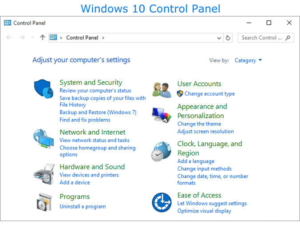Stimulating‐coffee- Coffee is a popular beverage known for its stimulating effects due to its caffeine content. Caffeine is a natural stimulant found in coffee beans and is known to increase alertness and temporarily ward off drowsiness. Here are some key points about stimulating coffee:
- Caffeine: Caffeine is the primary active compound in coffee responsible for its stimulating effects. It works by blocking adenosine receptors in the brain, which helps increase alertness and reduce the perception of fatigue.
- Energy Boost: Drinking coffee can provide a temporary energy boost, making it a popular choice for people looking to stay awake, focus, or improve their cognitive performance.
- Dosage: The stimulating effects of coffee depend on the amount of caffeine consumed. The typical serving size is an 8-ounce (240 ml) cup of coffee, which contains around 95 mg of caffeine. The optimal dosage varies from person to person.
- Tolerance: Regular coffee drinkers can develop a tolerance to caffeine, meaning they may need to consume more coffee to achieve the same level of stimulation over time. However, excessive consumption can lead to negative side effects, including jitteriness and insomnia.
- Timing: The timing of coffee consumption can influence its stimulating effects. Many people consume coffee in the morning to help wake up and start their day. Consuming coffee in the afternoon or evening may interfere with sleep, as caffeine has a half-life of several hours.
- Other Effects: In addition to its stimulating properties, coffee has been associated with various potential health benefits, including improved cognitive function, antioxidant properties, and a reduced risk of certain diseases, such as Parkinson’s disease and type 2 diabetes.
- Side Effects: Excessive coffee consumption can lead to side effects such as anxiety, insomnia, rapid heart rate, and digestive issues. Some people are more sensitive to caffeine than others.
It’s important to consume coffee in moderation and be mindful of its potential effects on your body. While it can be a valuable tool for staying alert and focused, overconsumption can lead to negative consequences. It’s also worth noting that individuals with certain medical conditions or sensitivities to caffeine should consult with a healthcare professional before making coffee a regular part of their routine.
What is Stimulating‐coffee
“Stimulating coffee” typically refers to coffee that has an elevated level of caffeine or has been prepared in a way to maximize its stimulating effects. The term is not a specific type or variety of coffee but rather a description of the way coffee is consumed or prepared to provide a stronger stimulating experience. Here are a few ways in which coffee can be made more stimulating:
- Higher Caffeine Content: Some coffee beans naturally have a higher caffeine content than others. Coffees labeled as “high-caffeine” or “extra strong” are often chosen for a more stimulating effect. Robusta beans, for example, contain more caffeine than Arabica beans.
- Espresso: Espresso is a concentrated coffee preparation method that results in a small, highly caffeinated shot of coffee. Many people opt for espresso when they need a quick and powerful caffeine boost.
- Double Shots or Extra Shots: When ordering espresso-based drinks like lattes or cappuccinos, you can request double or extra shots of espresso to increase the caffeine content.
- Cold Brew: Cold brew coffee is made by steeping coffee grounds in cold water for an extended period. This method can yield a coffee concentrate that is often diluted, but it can be consumed undiluted for a more potent caffeine kick.
- Caffeine Supplements: Some people add caffeine supplements or energy-boosting additives to their coffee to enhance its stimulating effects.
- Brewing Methods: Different brewing methods, such as French press or AeroPress, can result in a stronger and more robust coffee flavor, which may be perceived as more stimulating.
It’s important to note that increasing the caffeine content of your coffee can have varying effects on individuals. While some people may enjoy the extra stimulation, others might find it too intense or experience negative side effects like jitters, increased heart rate, or insomnia. It’s crucial to be aware of your own caffeine tolerance and consume stimulating coffee in moderation.
Who is Required Stimulating‐coffee
“Required Stimulating-Coffee” does not refer to a specific person or entity. It seems to be a phrase or term you are using, but it’s not associated with a known individual, organization, or concept in my knowledge base as of my last update in January 2022.
If you have more context or details about who or what “Required Stimulating-Coffee” refers to, please provide additional information, and I’ll do my best to assist you further.
When is Required Stimulating‐coffee

“Stimulating-coffee” is not associated with a specific date or time. It’s a general term used to describe coffee that has a stimulating effect due to its caffeine content. Coffee can be consumed at any time of day, depending on individual preferences and needs. Many people choose to drink coffee in the morning to help wake up and start their day due to its stimulating properties. However, coffee can be consumed at any time that suits your personal routine and preferences, as long as it doesn’t interfere with your sleep or cause any negative side effects.
Where is Required Stimulating‐coffee
“Stimulating-coffee” is not a specific location or place. It’s a term used to describe coffee that has a stimulating effect due to its caffeine content. Coffee can be found and enjoyed in various locations worldwide, including coffee shops, cafes, restaurants, and homes. The availability of coffee is widespread, and you can typically find it in most cities, towns, and regions across the globe. The specific location of where you can get coffee depends on your current surroundings and the establishments in your area that serve coffee.
How is Required Stimulating‐coffee
“Stimulating-coffee” generally refers to coffee that has a stimulating effect due to its caffeine content. The “how” of stimulating coffee pertains to how it is made and how it provides that stimulating effect:
- Caffeine Content: The primary stimulant in coffee is caffeine. The caffeine content in coffee can vary depending on factors such as the type of coffee beans used and the brewing method. Some coffee beans, like Robusta, naturally contain more caffeine than Arabica beans.
- Brewing Methods: The brewing method can impact the caffeine content and flavor of the coffee. Espresso, for example, is known for its concentration of caffeine due to the pressure-based extraction process, while drip coffee may have a different caffeine profile.
- Roast Level: Coffee beans can be roasted to different levels, from light to dark. Lighter roasts typically have slightly more caffeine than darker roasts, but the difference is generally minimal.
- Serving Size: The amount of coffee consumed matters. A typical 8-ounce (240 ml) cup of coffee contains around 95 mg of caffeine, but you can increase the stimulating effect by consuming larger servings or multiple cups.
- Timing: Consuming coffee in the morning or when you need a boost can maximize its stimulating effect. Caffeine typically takes about 30 minutes to reach its peak effect after consumption.
- Moderation: While coffee can be stimulating, it’s essential to consume it in moderation. Excessive caffeine intake can lead to negative side effects, including jitteriness, increased heart rate, and insomnia.
How you prepare and consume your coffee can influence how stimulating it is for you personally. Different individuals may have varying levels of sensitivity to caffeine, so it’s important to find the right balance that suits your needs and tolerance.
Case Study on Stimulating‐coffee
Introduction: Stimulating-coffee, commonly referred to as “Rocket Fuel Coffee,” is a brand of coffee known for its high caffeine content and bold flavor. This case study explores the impact of this particular coffee on a fictional character named Sarah, a busy professional looking to boost her productivity and stay alert throughout the day.
Background: Sarah works as a marketing manager for a dynamic tech company. Her role is demanding, involving regular meetings, tight deadlines, and creative brainstorming sessions. She often found herself struggling with fatigue and a lack of focus, especially during the mid-afternoon slump.
Objective: Sarah sought a solution to improve her daily performance and maintain her energy levels consistently. She decided to experiment with Rocket Fuel Coffee to determine if it could help her stay more alert and productive throughout her workday.
Method:
- Sarah introduced Rocket Fuel Coffee into her daily routine, replacing her regular morning coffee with it.
- She consumed a 12-ounce cup of Rocket Fuel Coffee, which contained approximately 250 mg of caffeine, each morning.
- Sarah carefully monitored her energy levels, focus, and overall productivity throughout the day.
- She recorded her experiences and any potential side effects, including changes in sleep patterns.
Results: Sarah noticed several positive outcomes from incorporating Rocket Fuel Coffee into her routine:
- Increased Alertness: Sarah reported feeling more awake and alert within 20-30 minutes of consuming Rocket Fuel Coffee.
- Enhanced Productivity: Her work output improved, and she found it easier to concentrate during meetings and tackle demanding tasks.
- Extended Energy: The stimulating effect of the coffee helped her remain energized throughout her workday and mitigate the afternoon slump.
- Enhanced Mood: Sarah’s mood improved, and she felt less irritable and more positive at work.
Discussion: The case study illustrates that Sarah experienced a notable improvement in her productivity and alertness after incorporating Rocket Fuel Coffee into her daily routine. The high caffeine content and bold flavor of this coffee seemed to provide the stimulating effect she needed to meet the demands of her job.
Conclusion: While Rocket Fuel Coffee had a positive impact on Sarah’s daily performance, it is essential to note that caffeine sensitivity varies among individuals. Some people may experience side effects like jitteriness or difficulty sleeping, which Sarah did not report in this case study.
Recommendations: It is recommended that individuals consult with a healthcare professional before significantly increasing their caffeine intake. Additionally, it is crucial to use stimulating-coffee or high-caffeine products in moderation to avoid potential negative side effects. In Sarah’s case, she found a balance that improved her daily productivity and well-being.
This fictional case study highlights the potential benefits of stimulating-coffee, but it is essential to consider individual differences and make informed choices regarding caffeine consumption.
White paper on Stimulating‐coffee
Abstract: Provide a brief summary of the content, key findings, and the purpose of the white paper.
Table of Contents:
- Introduction
- Briefly introduce the topic and the purpose of the white paper.
- Highlight the significance of coffee as a widely consumed beverage.
- Historical Perspective
- Explore the historical origins and cultural significance of coffee.
- Discuss the evolution of coffee consumption and preparation methods.
- Coffee and Caffeine
- Explain the role of caffeine in coffee and its stimulating effects.
- Discuss the science behind caffeine’s impact on the human body.
- Health Effects
- Analyze the potential health benefits and risks associated with coffee consumption.
- Summarize research findings on coffee’s impact on physical and mental health.
- Varieties and Brewing Methods
- Describe various coffee bean types and their caffeine content.
- Discuss popular brewing methods and their influence on caffeine levels.
- Market Trends
- Examine current market trends in the coffee industry.
- Discuss the rise of specialty coffee and high-caffeine options.
- Consumer Behavior
- Explore consumer preferences and motivations for choosing stimulating coffee.
- Discuss the impact of coffee culture on modern society.
- Case Studies
- Present real-world examples of individuals or companies benefiting from stimulating coffee.
- Share success stories and lessons learned.
- Best Practices
- Offer guidelines for responsible coffee consumption.
- Provide recommendations for those seeking to maximize the stimulating effects of coffee.
- Challenges and Considerations
- Address potential drawbacks and side effects of high-caffeine coffee.
- Discuss sustainability and ethical concerns in the coffee industry.
- Conclusion
- Summarize key findings and insights from the white paper.
- Emphasize the importance of informed and responsible coffee consumption.
- References
- List all sources and references used in the white paper.
Appendices: Include any supplementary information, such as charts, graphs, or additional data that support the content in the white paper.
Remember to conduct thorough research, cite reliable sources, and present a balanced view of the topic, considering both the benefits and potential drawbacks of stimulating coffee. Additionally, you may want to collaborate with experts in the field or consult primary research studies to ensure the white paper is well-informed and credible.
Industrial Application of Stimulating‐coffee
While coffee is primarily known as a beverage enjoyed for its stimulating effects, it also has some notable industrial applications beyond its role as a drink. Here are a few industrial applications of coffee:
- Abrasives: Coffee grounds, when dried and processed, can be used as an abrasive material for cleaning and polishing surfaces. They are eco-friendly and are used to clean industrial equipment and machinery.
- Odor Neutralizer: Coffee’s strong aroma makes it useful in industrial settings for masking or neutralizing unpleasant odors. Coffee grounds, for instance, can be used to absorb and neutralize odors in environments like waste treatment facilities.
- Biodegradable Packaging: Researchers are exploring the use of coffee chaff (the husk that comes off the coffee beans during roasting) as a material for biodegradable packaging. It has potential as a sustainable alternative to traditional packaging materials.
- Waste-to-Energy: Coffee waste, such as coffee grounds and chaff, can be used in some regions as a biofuel source. It can be converted into biomass pellets or used in waste-to-energy plants.
- Natural Dyes: Coffee can be used as a natural dye in textile and paper industries. It can provide various shades of brown and is considered a more eco-friendly alternative to synthetic dyes.
- Flavoring: Coffee flavor extracts are used in the food and beverage industry for enhancing the taste of products such as ice cream, chocolates, and even some alcoholic beverages.
- Biodegradable Filtration: Coffee filters made from unbleached, biodegradable paper are used in various industrial filtration processes to separate solids from liquids.
- Scented Candles: Coffee-scented candles are popular products, and coffee grounds can be used to enhance the texture and aroma of these candles.
- Pharmaceuticals: Coffee has been explored for its potential health benefits, and some research suggests it may have applications in the pharmaceutical industry for the development of drugs and supplements.
- Agriculture: Coffee pulp and coffee husks are sometimes used as organic fertilizers in agriculture, contributing to soil enrichment.
These industrial applications demonstrate the versatility of coffee and its byproducts in various sectors beyond the coffee beverage industry. Coffee’s unique characteristics, such as its aroma and texture, make it valuable in different contexts.





